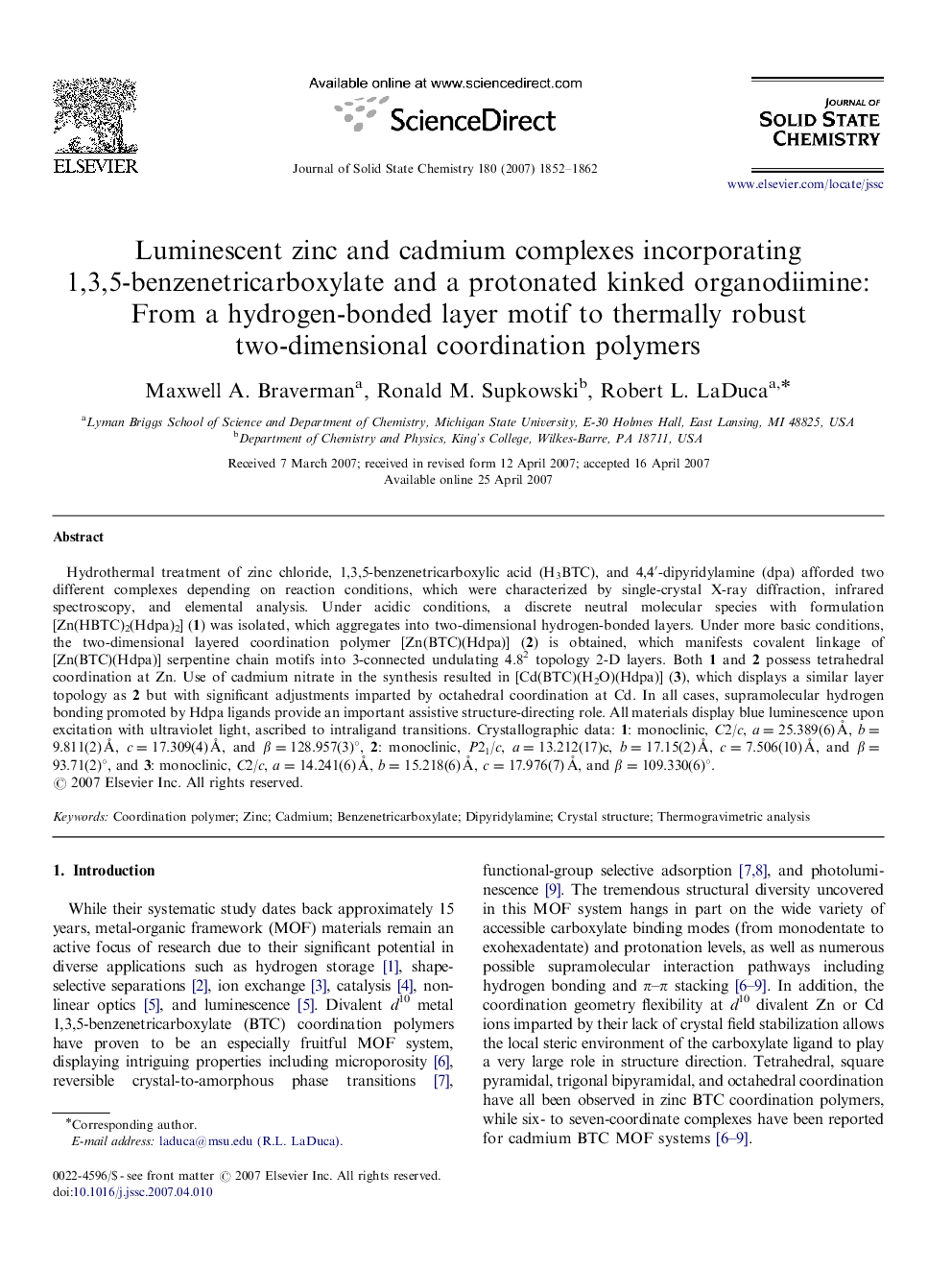| Article ID | Journal | Published Year | Pages | File Type |
|---|---|---|---|---|
| 1332629 | Journal of Solid State Chemistry | 2007 | 11 Pages |
Hydrothermal treatment of zinc chloride, 1,3,5-benzenetricarboxylic acid (H3BTC), and 4,4′-dipyridylamine (dpa) afforded two different complexes depending on reaction conditions, which were characterized by single-crystal X-ray diffraction, infrared spectroscopy, and elemental analysis. Under acidic conditions, a discrete neutral molecular species with formulation [Zn(HBTC)2(Hdpa)2] (1) was isolated, which aggregates into two-dimensional hydrogen-bonded layers. Under more basic conditions, the two-dimensional layered coordination polymer [Zn(BTC)(Hdpa)] (2) is obtained, which manifests covalent linkage of [Zn(BTC)(Hdpa)] serpentine chain motifs into 3-connected undulating 4.82 topology 2-D layers. Both 1 and 2 possess tetrahedral coordination at Zn. Use of cadmium nitrate in the synthesis resulted in [Cd(BTC)(H2O)(Hdpa)] (3), which displays a similar layer topology as 2 but with significant adjustments imparted by octahedral coordination at Cd. In all cases, supramolecular hydrogen bonding promoted by Hdpa ligands provide an important assistive structure-directing role. All materials display blue luminescence upon excitation with ultraviolet light, ascribed to intraligand transitions. Crystallographic data: 1: monoclinic, C2/c, a=25.389(6) Å, b=9.811(2) Å, c=17.309(4) Å, and β=128.957(3)°, 2: monoclinic, P21/c, a=13.212(17)c, b=17.15(2) Å, c=7.506(10) Å, and β=93.71(2)°, and 3: monoclinic, C2/c, a=14.241(6) Å, b=15.218(6) Å, c=17.976(7) Å, and β=109.330(6)°.
Graphical abstractHydrothermal synthesis has afforded a family of luminescent complexes based on divalent d10 cations with 1,3,5-benzenetricarboxylate (BTC) and 4,4′-dipyridylamine (dpa) ligands. [Zn(HBTC)2(Hdpa)2] (1) is a discrete neutral molecular species. [Zn(BTC)(Hdpa)] (2, pictured) and [Cd(BTC)(H2O)(Hdpa)] (3) are 2-D coordination polymers with different morphologies depending on coordination geometry at the metal. All three materials exhibit blue–violet luminescence on exposure to ultraviolet radiation.Figure optionsDownload full-size imageDownload as PowerPoint slide
